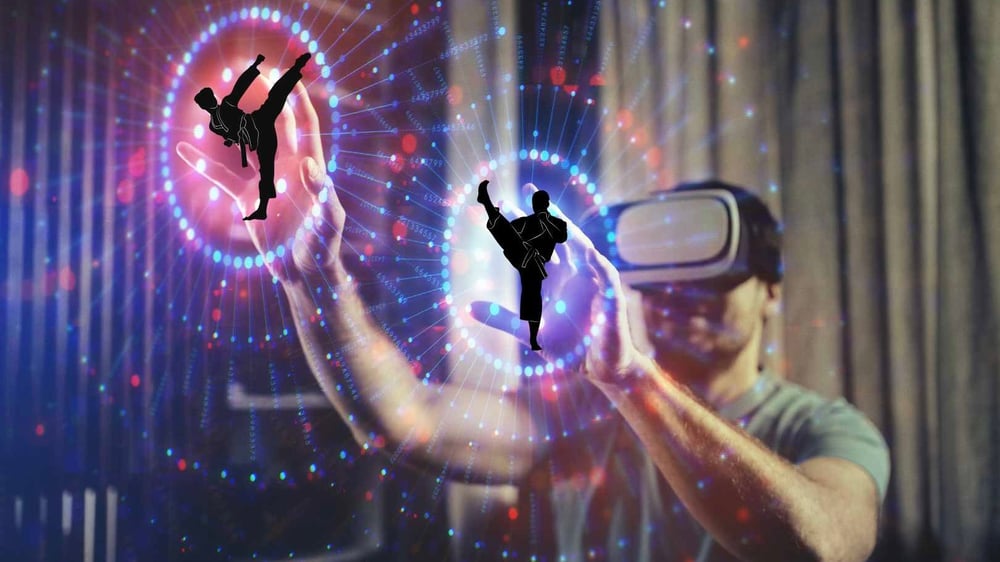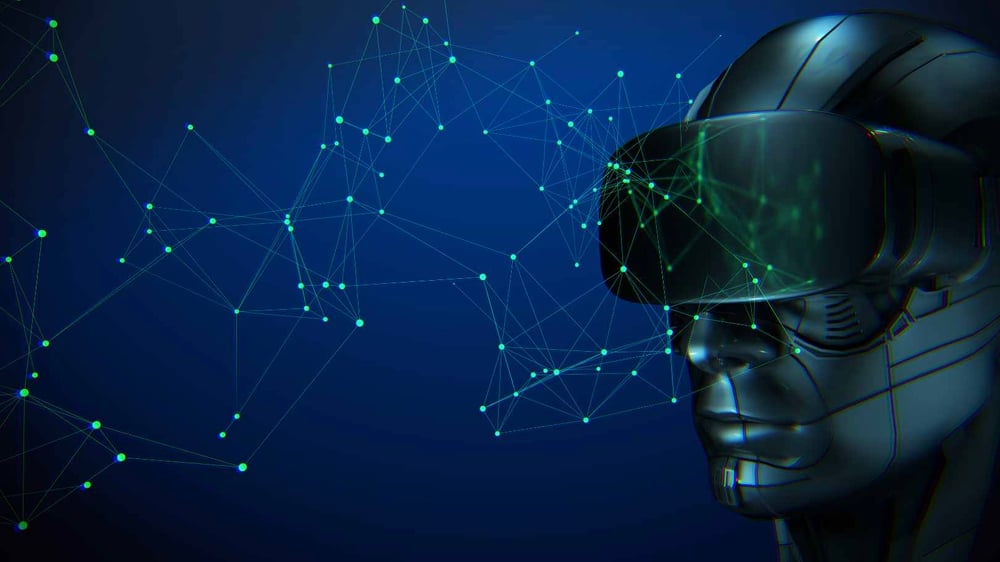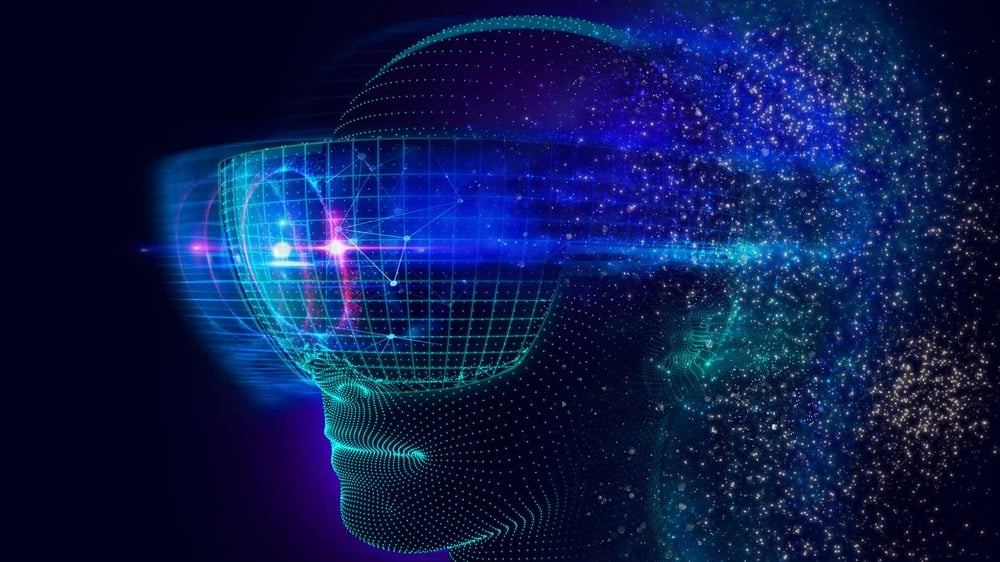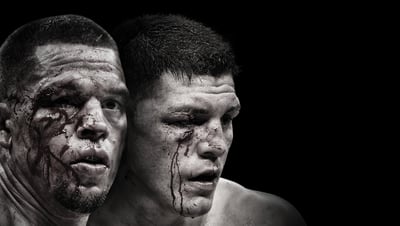
Issue 216
April 2025
Ray Klerck steps into the MMA gym of the future, where sweat is optional, avatars don’t flinch, and VR is teaching fighters how to win without a bruise.
In the final season of Cobra Kai, when the good guys are prepping to fight the big bads, the former dons VR headsets to sharpen their technique against the digital doppelgängers of their nemesis. Sound Hollywood? Maybe. But also, it was kind of genius because that dojo drama wasn’t that far off from what’s happening in real combat sports training. VR is no longer just the tech bro toy. It’s creeping into MMA gyms, influencing everyone from Olympic judokas to YouTube boxers training for their next legacy cosplay bout. A March 2025 mini-review in Frontiers in Psychology analyzed 13 studies on how VR is used in combat sports like judo, karate, taekwondo, and wrestling. The conclusion? This isn’t a sci-fi Ready Player One script. It’s a shortcut to faster reaction times, safer learning curves, and confidence-boosting reps that don’t leave you bruised like an overripe banana. You can practice on a digital opponent, get real-time feedback, and do it all without needing stitches.
AVATARS DON’T SWING BACK
Let’s start with the basics. VR training systems immerse you in a fake world where punches aren’t packed, but the reflex training is real. From taekwondo students learning to land flying kicks in mid-air like glitchy superheroes to judo athletes mimicking masters using Kinect, VR lets you repeat elite movements without needing a live partner. VR is making waves across a multitude of pro sports, helping Australian swimmers nail relay transitions, NFL quarterbacks sharpen decision-making with mental reps, and keeping NBA stars get game-ready during their injury recovery. Combat sports are possibly a more natural fit for this technology. In the research, wrestlers showed significant gains in strength and agility after an 8-week VR-infused training camp. Karate students reacted faster to strikes from digital opponents. And elite athletes in these studies reported better accuracy in their movements, probably because VR helps with the one thing most coaches struggle to deliver: perfect, personalized feedback from every single rep. No, it will not build more gas in the tank endurance. And sure, you won’t feel the slap of a real leg kick (yet). But as a tool to hone precision, timing, and strategy, VR's no gimmick. And how many fights have been canceled due to a sparring injury while in the fight prep stage? Max Holloway. Cain Velasquez. Khabib Nurmagomedov. The list is long. And these fights got canceled because sparing got too real, costing them the big show and the big money.

PLUG IN PERFORMANCE
Real fighters might plug in to these not just to sharpen their skills but to train their minds for chaos. VR may simulate the kind of pressure fighters feel under the lights, with roaring crowds and high-stakes expectations. According to studies cited in the Frontiers in Psychology review, crowd noise, and audience presence can significantly affect performance, inducing anxiety, hesitation, or what fighters call the Octagon jitters, where the bright lights of the big show get to a fighter. VR offers a safe space to rehearse that intensity without needing to actually be in front of thousands of screaming fans. Whether it's learning to keep your composure when your name’s booming through the arena or adjusting to visual distractions like flashing cameras, VR creates a mental dress rehearsal that traditional shadowboxing can’t match. It’s not just physical reps anymore. It’s psychological armor. The crowd may still roar, but your brain’s already been there.
REACTION TIME: FROM 'OH NO' TO 'OH YEAH'
Training your brain to pull the trigger faster might be the real performance enhancer in a sport where milliseconds matter. Multiple studies in the review found VR improves reaction times by prompting fighters to respond to visual cues from their digital opponents. Think less 1980’s button-smashing and more genuine fight-readiness. In the research, athletes went from reacting to the final punch to reacting to the start of the wind-up. That might be the difference between slipping a jab and getting your mouthguard knocked into row C. Here’s where the head-scratching begins: the researchers found that after 10 sessions of VR training, karate athletes could detect and respond to attacks earlier and faster. Sure, they didn’t land real strikes. But they learned how to time them, set them up, and read their opponents like a Kindle. The main caveat? VR doesn’t yet replicate the chaos of a real brawl. No blood. No smell. No adrenaline dump. But it’s like shadowboxing on performance-enhancing software.

FEMALE FIGHTERS MIGHT LEVEL UP FASTER
The review also hinted at a fascinating gender divide where women might benefit more than men from VR training. Why? It could be due to fewer sparring partners, concerns around inappropriate contact in male-dominated gyms, or simply the ability to train without being second-guessed. In VR, there’s no ‘go easy on her.’ No patronizing pats on the back. It's just pure performance built from data and repetition. And that psychological safety matters. It creates an environment where technique, not toughness, gets top billing. This technology could be the most empowering sparring partner for female fighters navigating training environments that so often skew male. More research is needed, but the implications are enormous. VR might become a bridge to parity, helping underserved fighters get reps with elite digital opponents when real ones are hard to come by. It’s a situation that mirrors the 1987 movie North Shore, where an Arizona wave pool surfer goes to Hawaii to surf pipeline contest in triple-story waves. He gets flogged, but at least he gets a few good rides. VR won’t stop you from getting dumped on your first wave but might give you just enough to stand up when it counts.
STILL NO DIGITAL BRUISES
Of course, VR has its flaws. No matter how fast you punch the air, it won’t teach you how to cop one on the chin. You can’t feel weight shifts in the clinch. There’s no thud when a shot lands. That’s because the current systems lack tactile feedback. After all, your knuckles aren’t bouncing off anything real. This gap means VR is still valid for skill acquisition and reaction training, not toughness, cardio, or building fight-ending power. And while some studies show VR can improve movement mechanics and accuracy, others found that throwing skills (like in darts or boxing) didn’t always translate back to the real world with the same success. But this is a version 1.0 issue. The future? Expect haptic gloves, resistance suits, and maybe even full-body tracking systems that simulate impact and load. Until then, you still need a coach, a mat, and someone willing to crack your ribs when you drop your guard.

PLUG-IN OR GET LEFT BEHIND
MMA is evolving, and as more fighters look to extend their careers, dodge injuries, and maximize every training minute, VR is becoming more than a gimmick. It’s a training edge. A rehab tool. A fight IQ enhancer. And soon, maybe even a virtual league of its own with big money on the line. Imagine loading up your headset and sparring with an AI modeled on Valentina Shevchenko’s movement patterns. Or feeding your opponent’s old fight footage into a machine that builds a digital clone of you or someone else to rehearse against. The only thing missing will be the smell of sweat and the sound of your coach screaming for you to circle out. For now, VR won’t replace hard sparring. But it might save your joints, sharpen your reactions, and help you stay sharp when everyone else is too sore to think. So go ahead, strap in. Boot up. And welcome to Fight Camp, version 2.0.
...









